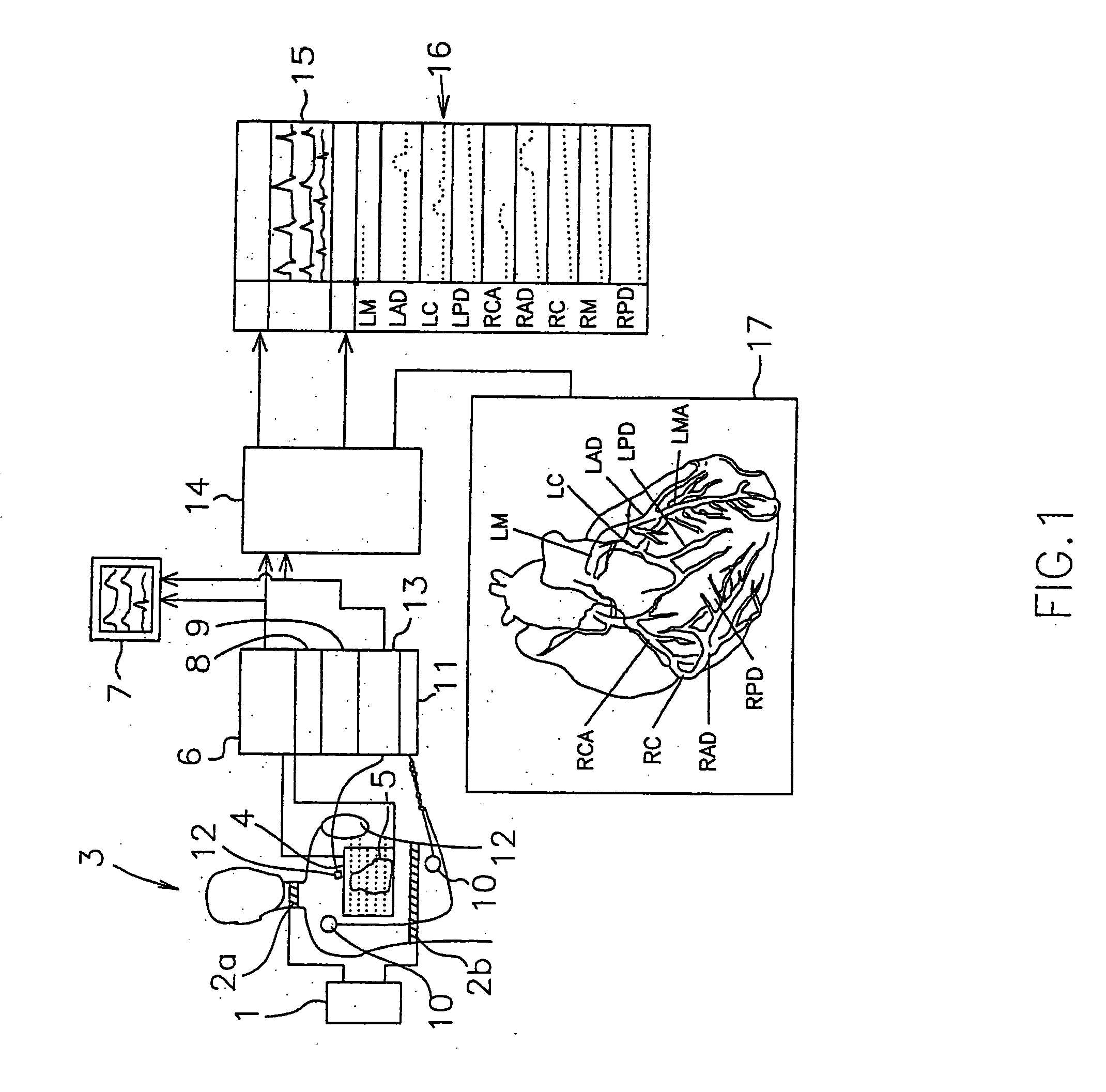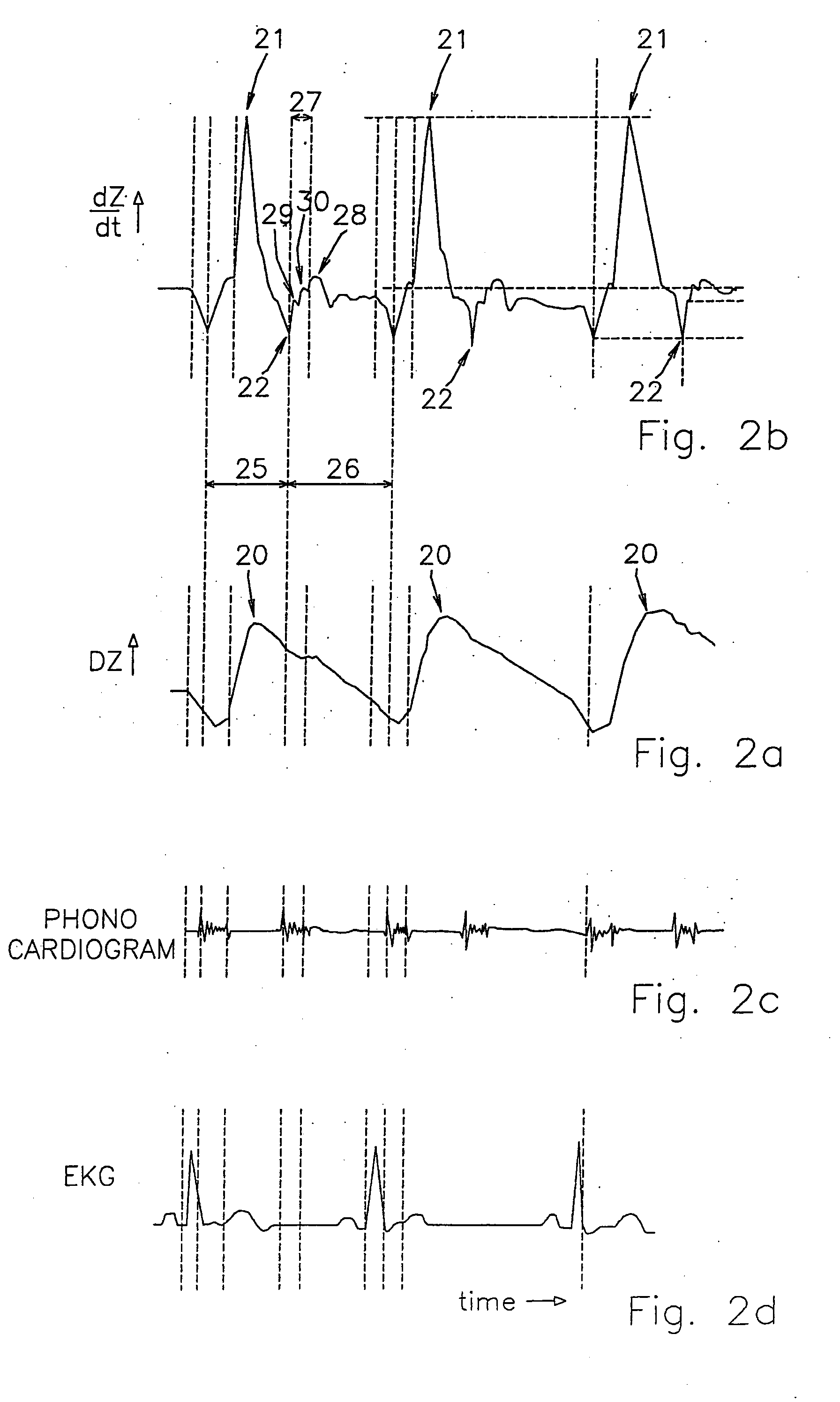Stenosis detection device
a detection device and stenosis technology, applied in the field of stenosis detection devices, can solve the problems of invasive methods, risk to patients, and major and very costly treatment of coronary stenosis
- Summary
- Abstract
- Description
- Claims
- Application Information
AI Technical Summary
Benefits of technology
Problems solved by technology
Method used
Image
Examples
Embodiment Construction
[0055]FIG. 1 shows a diagrammatic overview of the device according to the present invention, as applied to a human body 3. In FIG. 1, reference numeral 1 represents a current source, connected to supply electrodes and, which are applied to the upper part of a human body 3.
[0056] A mesh 4 of measuring electrodes is connected to an impedance measuring means 6, and to scanning means 9. The mesh 4 of measuring electrodes substantially covers the heart 5 of the human body 3. The mesh 4 is a rectangular mesh, with an interelectrode distance of 1 mm, though any other suitable distance is possible.
[0057] The impedance measuring means 6 are connected to a first monitor 7. EKG electrodes 10, which are also applied to the upper part of the human body 3, are connected to EKG measuring means 11. Phonocardiograph 12 is applied to the upper part of the body as well, and are connected to phonocardiogram measuring means 13. A correct position for the phonocardiagraph means 12 is at the 3rd interco...
PUM
 Login to View More
Login to View More Abstract
Description
Claims
Application Information
 Login to View More
Login to View More - R&D
- Intellectual Property
- Life Sciences
- Materials
- Tech Scout
- Unparalleled Data Quality
- Higher Quality Content
- 60% Fewer Hallucinations
Browse by: Latest US Patents, China's latest patents, Technical Efficacy Thesaurus, Application Domain, Technology Topic, Popular Technical Reports.
© 2025 PatSnap. All rights reserved.Legal|Privacy policy|Modern Slavery Act Transparency Statement|Sitemap|About US| Contact US: help@patsnap.com



